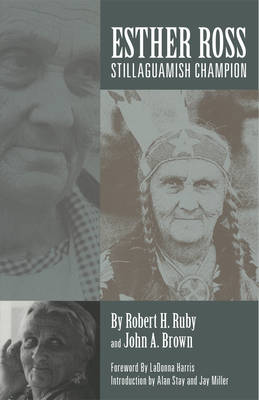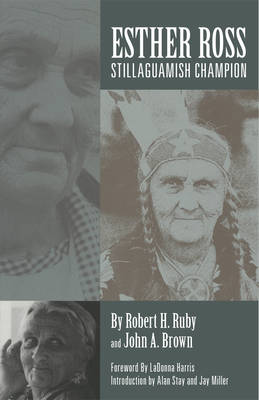
- Retrait gratuit dans votre magasin Club
- 7.000.000 titres dans notre catalogue
- Payer en toute sécurité
- Toujours un magasin près de chez vous
- Retrait gratuit dans votre magasin Club
- 7.000.0000 titres dans notre catalogue
- Payer en toute sécurité
- Toujours un magasin près de chez vous
Description
"Oh God, here comes Esther Ross." Such was the greeting she received from members of the U.S. Congress during her repeated trips to the Capitol on behalf of Stillaguamish Indians. Tenacious and passionate, Esther Ross's refusal to abandon her cause resulted in federal recognition of the Stillaguamish Tribe in 1976. Her efforts on behalf of Pacific Northwest Indians at federal, state, and local levels led not only to the rebirth of the Stillaguamish but also to policy reforms affecting all Indian tribes.
In this rare, in-depth portrait of a contemporary American Indian woman, Robert H. Ruby and John A. Brown document Ross's life and achievements. At the turn of the twentieth century, the Stillaguamish tribe, located on the Puget Sound in Washington State, had all but disappeared. With no organization or system of communication, tribal members dispersed. Desperate for help, surviving members asked Ross, a young, well-educated descendant of Stillaguamish and Norwegian heritage, to assist them in suing for lost land and government services. For fifty years, she waged a persistent campaign, largely self-staffed and self-funded. Despite personal problems, cultural barriers, and reluctance among some tribal members, Ross succeeded, but she was eventually forced from tribal leadership.
Spécifications
Parties prenantes
- Auteur(s) :
- Editeur:
Contenu
- Nombre de pages :
- 338
- Langue:
- Anglais
Caractéristiques
- EAN:
- 9780806164724
- Date de parution :
- 12-09-19
- Format:
- Livre broché
- Format numérique:
- Trade paperback (VS)
- Dimensions :
- 140 mm x 216 mm
- Poids :
- 430 g

Les avis
Nous publions uniquement les avis qui respectent les conditions requises. Consultez nos conditions pour les avis.






